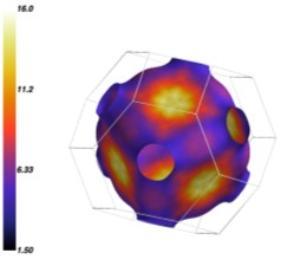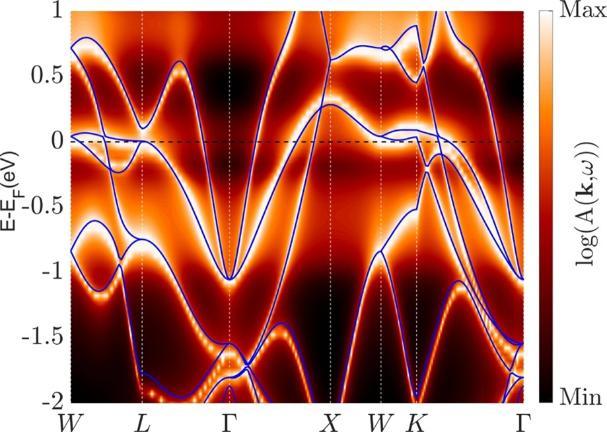Dugdale group
Research Interests & Activities
My research group focuses of understanding the electronic structure of crystalline materials. By combining experimental probes such as positron annihilation and x-ray Compton scattering with first-principles calculations, we study material properties such as the Fermi surface through their electron spin and momentum densities, as well as the impact of electron correlations. We make use of high-performance computing and international facilities such as the SPring-8 synchrotron in Japan. Much of the work is on metallic alloys and materials and regimes which are inaccessible to other probes.
Fermi surfaces of metals and metallic alloys
The Fermi surface holds the key to unlocking the dynamical properties of electrons. Its topology can influence a wide range of emergent phenomena ranging from magnetic order and superconductivity, through charge- and spin-density waves to shape-memory phenomena. Measuring the Fermi surface of substitutional alloys, where the inherent chemical disorder excludes many traditional techniques, can be achieved through the electron momentum distribution. For example, the Fermi surface of a so-called `high-entropy alloy’ has been revealed through high-resolution Compton scattering experiments. The colours indicate the electronic mean-free-path (in angstrom) which has been extracted from the smearing at different points on the Fermi surface due to the inherent disorder.

Probing electron correlations
Kohn-Sham density functional theory (KS-DFT) is theoretical framework for calculating electronic structure in which the many-body problem of a system of interacting electrons is reduced to one in which non-interacting electrons move within an effective potential. This effective potential describes the Coulomb interactions, including those between electrons (i.e. exchange and correlation). While the properties of many materials can be understood in this KS-DFT framework, there are also many materials where this breaks down completely. We are interested in going beyond KS-DFT and applying methods which are capable of capturing many body correlations, such as dynamical mean-field theory (DMFT), and exploiting the unique insight into the many-body wavefunction which comes from Compton scattering experiments. Understanding, and ultimately controlling the correlations in materials at a fundamental, quantum level is vitally important for future technological exploitation.

The figure shows the electronic structure of paramagnetic ZrZn2 revealed through the band structure from DFT (blue solid lines) and the DFT+DMFT spectral function (shown as a colour map). Subtle changes in the Fermi surface topology, coming from electron correlations, can be picked up from positron annihilation experiments.
Current researchers and PhD students
PhD Students
- Ty Mason
